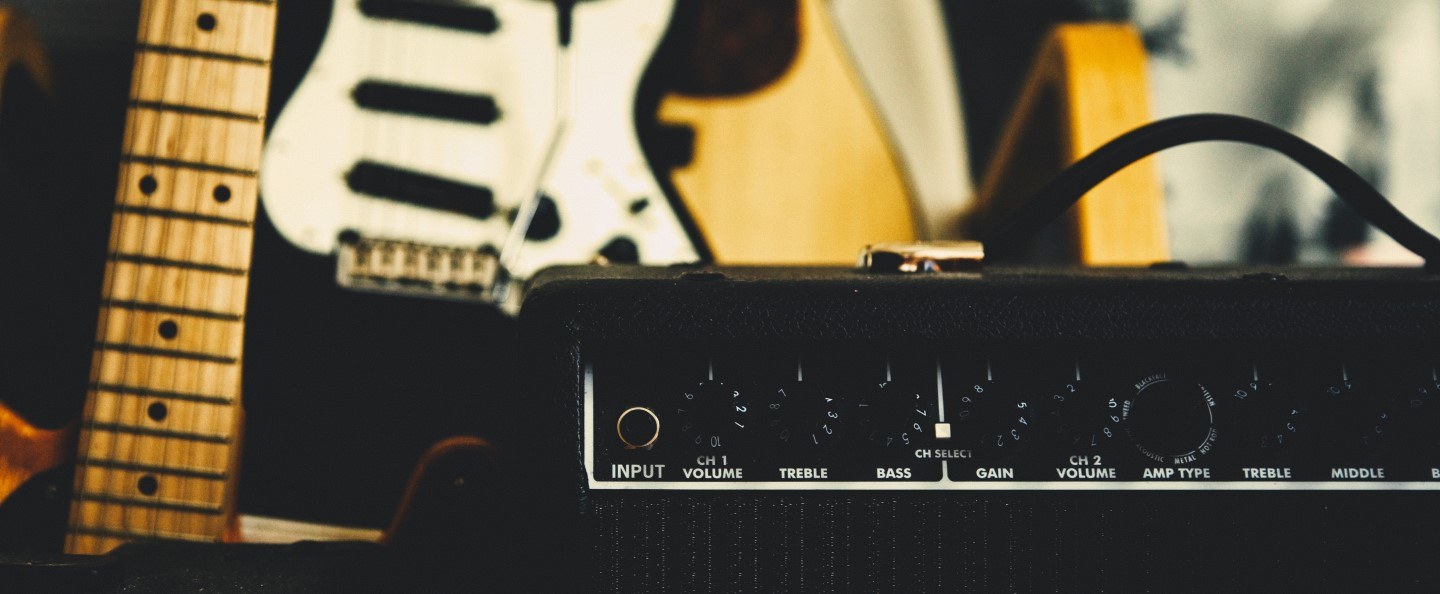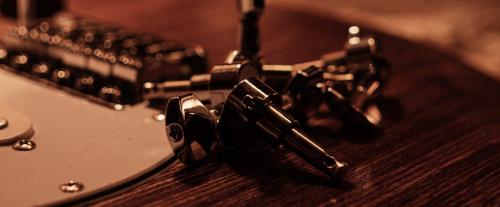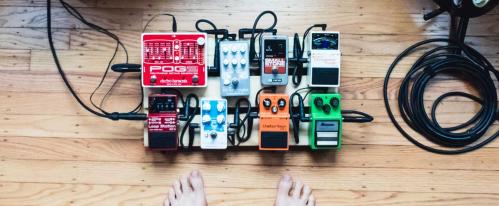No matter if you’re a bedroom producer or a stadium headliner, get the best from your set-up with our top tips on optimising your rig
In this blog we’ll be rounding up some of our favourite ways to optimise your guitar rig. Whether it be by improving the reliability of your set-up, enhancing your tone, or just finding new ways to keep everything neat and tidy - keep reading for the best ways to make your guitar sound as good as it possibly can.
Isolated Power Supplies

Do you have a bunch of pedals for your guitar rig?
If so, then you know how much noise they can add to your sound. Luckily, there’s an easy way to fix this problem. Isolated Power Supplies are the perfect solution for eliminating hum and additional noise from your pedalboard.
They provide clean power by isolating each individual pedal on its own circuit with its own transformer, which results in the elimination of the additional unwanted noise. This is especially helpful if you use a large amount of pedals like we do here at PMT.
You can pick a power supply based on how many effects pedals you need powered up at once - we recommend getting one that has enough outlets for all of your current equipment, plus some extra room just in case you decide to expand later down the road. That way everything is covered now and into the future without having any issues or running out of space anytime soon.
We like the MXR Iso Brick (pictured) - but you can shop a full-range of power supplies by clicking here:
Wireless Guitar Systems
Wireless Guitar Systems allow you to play guitar on stage completely free from cables, meaning you can move around without fear of tripping over or accidentally unplugging your guitar.
You’ll be able to focus more on playing and less on worrying about getting tangled up in a mess of wires, and with most wireless systems there is no need for any complicated set-up – just plug in and go.
These products are designed with musicians in mind, so they’re jam-packed with features that will make life easier for you when performing live.
If you want to get rid of those pesky cables once and for all then check out our Wireless Systems Comparison Guide here, and explore the rest of our range today by clicking below:
If you’re not sold on a wireless system, then the other way to make sure you sound great is with a solid set of cables..
High-Quality Cables

High-quality guitar cables are a surefire way to keep your guitar sounding as good as possible, whilst also improving the reliability of your rig.
Even if you do use a wireless system, you’ve probably got patch cables on your pedalboard that can contribute to a noisy set-up.
Hiss and hum that comes from using cheap cables is distracting and annoying, and it can be detrimental to the quality of your sound. That’s why we advise using high-quality cables for finding better tone and eradicating noise from your set-up.
Better cables use premium materials which means they won’t degrade or lose their integrity like some do after just a few months of regular use. The best cables will last a lifetime, so they’re a great investment.
If your sound has cut out then trying to locate the cable that is causing you problems can be a real nightmare. Many soundchecks have been ruined by a guitarist who can’t figure out which part of their signal chain has failed, but by upgrading your entire rig you needn’t worry about your pedals ruining your sound.
On the subject of pedals..
Pedalboards

Pedalboards are the perfect way to keep all of your pedals, power supplies, and patch cables in one place. They’re the best investment for any guitar player that likes to keep things tidy, and they’re especially useful for transporting your pedals between practice sessions and gigs.
When you have a solid pedalboard as part of your rig then setting up becomes as simple as plugging-in to the first pedal on your board and sending the output to your amplifier - so you can spend less time on sorting out patch cables and more time on shredding.
At PMT we have boards that fit any size or style of pedal set-up, so there’s something here for everyone. Whether you need a small board with room for just two or three pedals, or something larger with space for 10+ effects units – we have what you need.
Take a look at some of our favourite options below:
Two Notes Torpedo Captor X

The Two Notes Torpedo Captor X is a reactive load box, virtual cabinet, attenuator, impulse response loader and more.
It allows you to add tonal options and variety to your guitar sound no matter what your current rig is. With its unique design, this device will give you more control over your tone than ever before.
Whether you’re looking for that elusive “brown sound” or just want to experiment with different cabinets and mics in the studio without having to buy them all – this device has got you covered.
This product gives musicians access to hundreds of cab and mic combinations so they can achieve any desired tone quickly and easily. Now there are no limits on how many times you can change up your rig; simply plug in the Torpedo Captor X between the amp head and speaker cab.
And if that wasn't enough, there are some more awesome features and routing options which allow you to send dedicated signals to FOH and monitors with different EQ & Reverb - you can also send dry and wet signals to your interface and get huge guitar tones on your recordings.
Check out this video for more details on why we think it’s so good:
Two Notes Torpedo Cab M

What if you could have every sound at your fingertips without lugging around heavy amps or breaking your back trying to fit them into tight spaces? With the Two Notes Torpedo CAB M, you can do exactly that.
Similar to the Torpedo Captor X above, the Torpedo CAB M is an amp DI, impulse response loader, and virtual cabinet - but all in a stompbox pedal format.
You can use it as an amp simulator when you don't want to bother bringing along your whole rig but still need a great sound, and it’s filled with usable tones no matter what sort of music you need to play.
Check out the Two Notes range of products here:
Pedal Switching Systems

We’ve all been there. You have a killer sound for the first half of your set, but then it starts getting stale and you need something new. But with so many different effects at your disposal, how can you possibly decide which one is right for this part of the song? Pedal switching systems are here to help - they allow you to save multiple banks of pedal combinations and switch between them with ease.
No more dancing around your board during that crucial moment in the show - save your frustration by switching on or off various pedal combinations with one button instead.
Don’t let another gig pass without using a solid pedal switching system – they make life easier for every musician out there who wants their gear working perfectly when it matters most.
We particularly like the BOSS ES-8 (pictured) for its range of capabilities and ease of use.
Optimise Your Effects Loop

Learning how to properly utilise your effects loop can make a huge difference to the way your guitar sounds.
By using an effects loop you can avoid sending certain pedals to the preamp stage of your amplifier, instead sending them through just the power amp section where extra volume is added. This means that the stompboxes that you add to the loop will alter the guitar signal after it has had its tone modified by the pre-amp, resulting in a cleaner and more desirable sound.
This works best with time-based effects like delays and reverbs, but some people use modulation effects within the loop too - experiment with your pedal order until it sounds best to you. With that being said..
Organise Your Pedal Order
Whilst there are no specific rules for ordering your pedals, just as with using an effects loop it can pay to set up by following some simple guidelines.
The most obvious way to tidy up your tone is by ensuring that any modulation or ambience-based effect that isn’t in an effects loop comes after your distortion and drive pedals.
By doing this you avoid distorting (and therefore adding harmonics, overtones, and the like) a tone that is already modulated or repeated. This can give a muddy tone that, whilst certainly usable in some scenarios, is generally not how you would want your guitar to sound.
The most important thing is to remain consistent with your pedal order so that your tone isn't wildly different between gigs and rehearsals - save the experimenting for the studio.
For more on ordering your effects pedals, click here to read our full guide on setting up a pedalboard:
Still not sure how to get the best from your guitar? Need some extra help with setting up a guitar rig? Call us on 0151 448 2089 or check out your local store to speak to one of our Experts about your needs.




